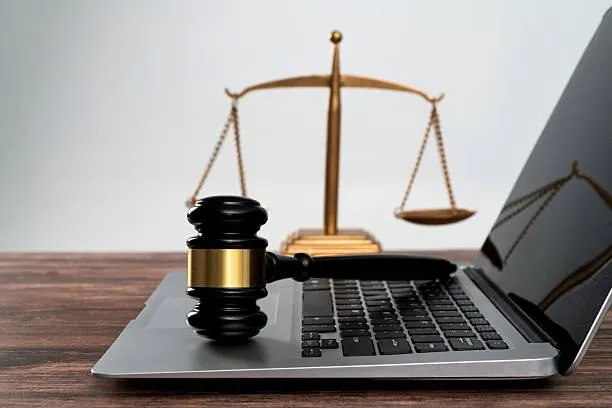
How Does Patent Licensing Work?
How Does Patent Licensing Work?
Introduction: You Own the Patent — Now What?
Imagine this: after months (or years) of hard work, you've finally secured a patent for your invention. It’s protected, it’s yours — but what now? If you're not ready to build a business or fund a full-scale product launch, licensing your patent might be the smarter move.
Patent licensing allows you to profit from your invention by letting others produce or sell it — while you retain ownership. But how does patent licensing actually work? What does a typical agreement look like? And how do you make sure you don’t lose control of your idea in the process?
In this guide, we’ll walk you through the ins and outs of how patent licensing works and how to do it right.
What Is Patent Licensing?
Patent licensing is a legal agreement where the patent holder (licensor) gives permission to another party (licensee) to use, manufacture, or sell a patented invention. In return, the licensee pays royalties or other compensation to the licensor.
It’s important to understand: you don’t lose ownership of your patent — you’re simply granting limited rights under defined terms.
There are three common types of patent licenses:
Exclusive License – Only one licensee has rights to the invention, and even the inventor is restricted from using it.
Non-Exclusive License – Multiple parties can license the same invention simultaneously.
Sublicensable License – The licensee is allowed to grant licenses to others.
This flexibility takes licensing an attractive option for inventors looking to scale impact or earn income without taking on manufacturing, sales, or operations.
How the Patent Licensing Process Works
Licensing a patent isn’t just about handing over a document. It’s a process that involves research, negotiation, legal drafting, and relationship management.
Here’s how it typically unfolds:
1. Ensure Patent Protection
You can’t license what you don’t own. Your invention must be fully patented or have a pending application that’s legally defensible.
2. Identify Potential Licensees
Target companies that already operate in the market you want to enter. These could be manufacturers, distributors, or brands that could benefit from your invention.
3. Pitch Your Invention
Present a clear, professional pitch that includes:
Problem and solution
Market opportunity
Competitive advantage
Patent status and protection
4. Negotiate Terms
You’ll work with the licensee to negotiate:
Royalty structure (percentage of sales, flat fee, milestone payments)
Territory (U.S., global, regional)
Exclusivity
Performance requirements (e.g., must sell X units per year)
5. Sign a Licensing Agreement
This legal contract outlines rights, responsibilities, timelines, fees, and penalties. Always work with an experienced licensing advisor or attorney to protect your interests.
6. Monitor the Agreement
Even after signing, your role isn’t over. Track sales reports, ensure royalty payments are received, and verify your invention is being used as agreed.
What Should Be Included in a Patent Licensing Agreement?
A patent license agreement is more than just permission — it’s a structured business relationship. Here are the core elements:
Grant of Rights
Defines exactly what the licensee is allowed to do (manufacture, distribute, modify, etc.).
Royalty Terms
Details how and when royalties are paid. Common structures include:
Percentage of gross or net sales
One-time licensing fee
Milestone payments (e.g., after development or market launch)
Exclusivity
States whether the agreement is exclusive or non-exclusive.
Term and Territory
Defines how long the agreement lasts and where the licensee is allowed to operate.
Performance Clauses
Encourages the licensee to actively use the patent (e.g., minimum production or sales).
Termination and Enforcement
Outlines how either party can exit the agreement and how disputes are handled.
Why Inventors Choose Licensing Over Manufacturing
For many inventors, building a company isn’t the goal — making an impact and earning revenue is.
Here’s why licensing can be a better option:
Licensing is especially beneficial if you’re an individual inventor with limited resources or no interest in running a business.
FAQs About Patent Licensing
How do I know if my invention is licensable?
Your invention should solve a real-world problem, have market potential, and be patent-protected. Companies want ideas that reduce their R&D time and can generate profit quickly.
How long does a licensing deal usually last?
Agreements typically range from 3 to 10 years, depending on market conditions, product life cycles, and mutual goals.
What is a reasonable royalty rate?
Royalty rates vary by industry but often range from 3% to 10% of gross or net sales. Rates can be higher if the invention is fully developed and ready for production.
Do I need a lawyer to license my patent?
Yes. A licensing agreement is a legal document that determines how your invention is used and compensated. Always have it reviewed by an IP attorney or licensing specialist.
Can I license my patent to multiple companies?
Yes, if it’s a non-exclusive agreement. But if you’ve granted exclusive rights, you cannot license the same invention to another party during the agreement’s term.
Conclusion: Your Idea Can Work for You — Even Without a Business
Patent licensing allows you to profit from your innovation while keeping ownership — and without the stress of manufacturing or selling yourself. It’s a proven path for inventors who want to turn ideas into income and impact.
At Own My Ideas, we help inventors like you connect with licensees, negotiate smart agreements, and protect what you’ve worked hard to create.
Want to explore licensing for your invention?
Submit Your Idea Now and let our team help you turn your patent into profit.